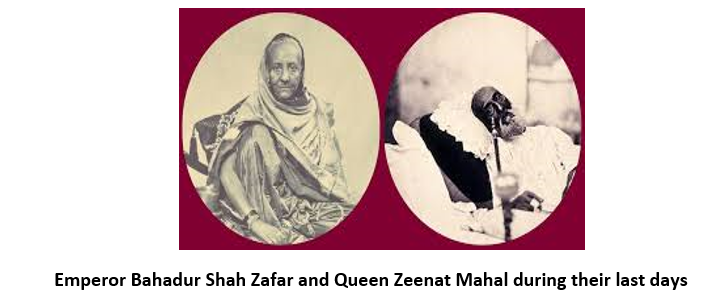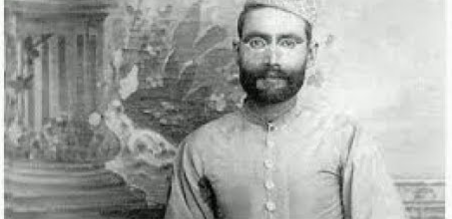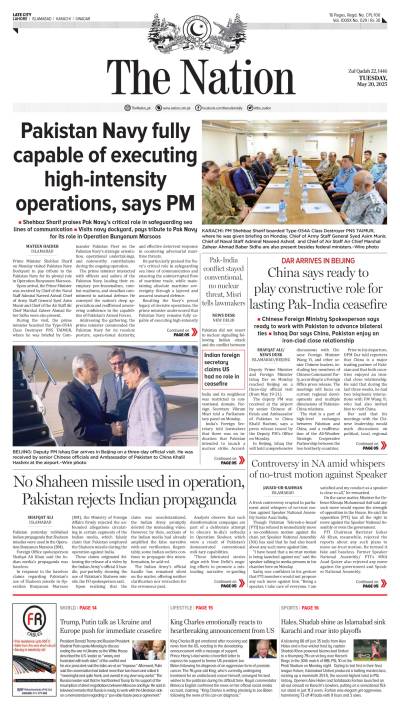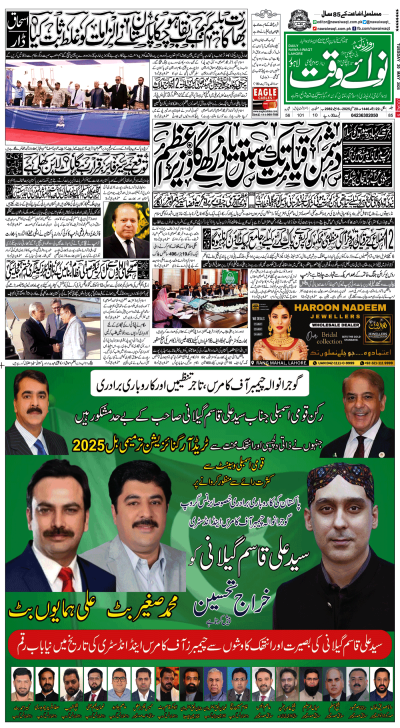Part I
On March 1859 the combined courts of Judicial Commissioner Oudh and Commissioner Khairabad, in the presence of witnesses and in the light of the charges framed by Captain Thurburn (Felix Augustus Victor Thurburn 1823 – 1902) announced its verdict against a certain man sentencing him a life imprisonment. The courts in their detailed combined verdict further stated that the man in question was of “extraordinary intelligence and acumen who should be reckoned as the most dangerous threat to the British presence in India, and therefore must be evicted from the Indian main soil. The salient of the charges included:
- Acted as the major force behind the mutiny
- Persuading masses to rise in revolt against the authority of the Company
- Issuing Fatwas, inciting violence and making instigating speeches
- Leading the armed rebellion in Delhi
- Campaigning and motivating masses to join the mutiny by calling it war of independence
- Plan and instigate murder and plunder of Europeans and their assets
- Influencing native soldiers for mutiny
- Having been unsuccessful in Delhi, escaping to Oudh to organize and trigger armed rebellion there
This was none other but my own ancestor, known in the then India as ‘Imam-e Mantaq-o- falsafa, Shamsul ulema’ Allama Fazle Haq of Khairabad. Also known by his post humous title of Baaghi-e-Hindustan, the rebel of Hindustan. As a child I had heard a lot about him from my father and also attended a few anniversary sessions held under the auspices of Jamaat Ahle Sunnat Wal Jamaat where my father used to be invited as a guest speaker. Being a flippant teen ager I did not pay much heed then, though, through my father’s occasional ramblings I had had a vague idea of his alleged role in the events of 1857 and even know the lineage by heart counting from my father Fazle Qadeer to Fazle Amin to Fazle Mateen to Fazle Hakeem to Fazle Rehman (Fazle Haq’s younger brother) to Fazle Imam (Fazle Haq’s father, considered as the patriarch of our family – himself, a giant scholar of his time). Fazle Haq is also the direct ancestor of the legendary writer and poet Mr Javed Akhter of India. His son Farhan and daughter Zoya are the recent heirs of the family associated with the Indian film industry (Bollywood).
Perhaps very few people know that Fazle Haq shared the same ancestry with Shah Ismail Shaheed (1779 – 1831, grandson of Shah Wali Ullah) known for his armed struggle at Balakot alongside Syed Ahmed Shaheed with the support of Pushtun tribes against the Sikh Empire which then ruled the northwest Indian subcontinent with their base in Punjab in the early half of the nineteenth century (Battle of Balakot 1831). Shah Ismail was killed on 6 May 1831 during a fierce battle at Balakot against a much disciplined and reorganized army of Maharaja Ranjit Singh. Both warriors are buried in near vicinity at Balakot. How that happened is altogether a different topic the details of which might spill out of the ambit of this article. 14 links from Shah Ismail Shaheed, the genealogy is the same which after another 16 links connects with Hazrat Omar Farooq , the 2nd Caliph of Islam.
Allama Fazle Haq Khairabadi was born on 7th April 1797 in Khairabad, Sitapur (migrated to Delhi in the start of 19th century with his father where he grew up and got his education) . He was a Maturidi theologian philosopher, an author, a poet, a religious scholar and a rationalist thinker. His father Maulana Fazle Imam was Sadr-us-Sadur, the advisor to the Mughals. Allama Fazle Haq learnt the holy Quran by heart in a record period of 4 months. He became an Aalim (religious academic and teacher) by the age of 13 after completing the entire curriculum in Arabic, Persian and religious studies. In 1828, he was appointed to the position of Mufti in the Department of Qaza. Besides being a scholar of Islamic studies and theology he was also a man of literature, specially of Urdu, Arabic, and Persian literature. He edited the first Diwan of Mirza Ghalib on his request. In fact Fazle Haq proved himself to be an invaluable catalyst in the growth of Ghalib’s poetry. According to many critics and contemporary poets of the time ‘Fazle Haq was one person whose contributions towards refining and shaping of Ghalib’s style of poetry had no parallel’. He was indeed a benevolent friend and mentor who not only helped him in poetry but also assisted him in his financial hardships.
Allama’s first job was in East India Company as Kachehri Chief of Delhi at the age of just 19, which he greatly despised, but, at the behest of his father, continued the same for 16 years as an acquired taste. However, soon after the death of his father he resigned from the job in 1831.
Allama Fazle Haq’s relationship with the last Emperor Bahadur Shah Zafar was ever since he was a prince. His father being Sadr-us-sadur of Delhi, Allama was a frequent visitor to the palace of Lal Qila. According to Ghalib, when Allama, in 1832, at the age of 35, after resigning from the Company’s service was about to embark on his journey to the State of Jhajhar on the personal invitation of its ruler (Nawab Faiz Muhammad Khan), the Wali Ahad Abu Zafar Bahadur was greatly distressed. With tears in his eyes he put his personal cloak on Allama’s shoulders and said […] because you are already on your way, I have no other option but to accept your request, nevertheless, only God knows that I don’t find the courage to say good bye.
This amply highlights as to the umbilical cord being shared by the two. The parting of the two did not snap it; rather their friendship further blossomed through letter writing. During the 25 years (prior to 1857), Allama remained out of Delhi serving under various independent states (Jhajhar, Saharanpur, Tonk, Rampur, Oudh and Alour). When the last Nawab of Oudh Nawab Wajid Ali Shah acceded the throne in 1847, he invited Allama as his ambassador to Calcutta, however he was designated as Sadrus Sadur and the Chief Judge in the centre Lucknow. His stay there spanned from 1848 to 1856. In February 1856 when the British deposed Wajid Ali Shah and annexed Oudh, he joined the state of Alour on the invitation of its ruler Raja Bannay Singh who was a great connoisseur and enthusiast of literature art and science.
No one had known that after quarter of the century, destiny would bring the two together on the same cross roads during the trying and fateful year of 1857; both were to meet same fate; both were to be banished from their own land.
In the year of 1857, when the rebellion started he came to Delhi many times and held private meetings with Bahadur Shah Zafar. This continued till May. On June 26 when General Bakht Khan along with his army of 14000 reached Delhi from Bareilly, Allama after Namaz-e-Jumah (Friday prayers) gave speech in front of Ulema on Jehad against Britishers and issued a Fatwa (religious verdict). The Fatwa was signed by Mufti Sadruddin Aazurda, Maulvi Abdul Qadir, Qazi Faizullah Dehelvi, Maulana Faiz Ahmed Badayuni, Dr Maulvi Wazir Khan, and Syed Mubarak Shah Rampuri. Soon after issuance of the Fatwa tension arose in the whole country and the company deployed an army of some 90,000 around Delhi.

During the trying moments of 1857, when all the ministers, office holders, commanders, and even princes were proving unreliable, and traitors and plotters were tightening their noose around the old king, the king requested him to reach Delhi to his aid. When Allama reached Delhi, he found no semblance of any order – only chaos and anarchy. Bahadur Shah Zafar saw Allama, the only one person who could be relied upon and therefore handed over complete administration in his hands. At that point in time Delhi was infested with British informers. His reaching to Delhi and taking over the administration was readily reported through a number of channels to the authorities of the Company. Allama after analyzing the prevailing situation immediately embarked on reorganizing and reforming the entire system. He started purging out the government from inefficient and incompetent office holders and replacing them with energetic, competent and efficient lot. He put reliable people on logistics of demand and supply due to which situation of demand and supply improved. He formulated a provisional constitution according to the dictates of the situation at hand. (The English translation of the constitution by Mehdi Hussain is available. This could be termed as the set of rules or ordnances similar to Martial law during an emergency). In the light of these ordnances he formulated a cabinet which comprised members of civil and military combined. Made appropriate arrangements to close all possible avenues of approaches of traitors and informers. Things started to look promising for a while, but the intricate cobweb of deceit and betrayal had already spread its vicious tentacle grabbing all corners of the power corridors. Seeds of deceit and machinations already sowed by the opportunists, traitors and plotters started to germinate. The perfidious claws of treachery had sunk deep into the flesh and bones of the already feeble body which had no choice but to give in. On 19 September 1857, the British occupied Delhi by force. Allama after remaining underground in Delhi for sometime fled to Khairabad. In December 1857 when war broke in Lucknow he reached Lucknow and remained active till the city fell into the hands of the British. In January 1859 a case was registered against him in courts where he accepted that he was the one who issued the Fatwa. He was finally convicted and sentenced to life imprisonment at Andeman (also known as Kala Pani, a group of islands some 600 miles south of the Indian Subcontinent). During the period of his 22 months captivity at Andemans, Allama wrote a number of eye witness accounts in the form of verses in Arabic (Qaseeda), apart from a book Alsoorat-ul- Hindia which is a critical analysis of the war and events of 1857. This is also the first ever book on the events of 1857. This book was stealthily handed over to Maulana Inayat Ahmed Kakorvi while he was returning to India after completion of his sentence at
Andamans. Maulana had asked him to hand over the same to his eldest son Abdul Haq Khairabadi. Though this was the first ever account from the pen of a key figure, however owing to fear of the British no publisher would be ready to publish the same for the next hundred years. In 1947, Maulana Abdul Shahid Khan Sherwani translated it into Urdu and got it published by the name of Baaghi-e-Hindustan. Till now the book has been published by many publishers including its English translation by Dr Syed Moeen ul Haq, which was also published in the Pakistan Historical Society Journal.
The following few excerpts from his book Alsoorat-ul-Hindia/Baaghi-e-Hindustan would help understand the events befalling Delhi in that fateful year:-

‘This is a book by a heartbroken, distressed and grieving man who now does not have the strength to bear any more pain. A man who led his life in affluence and wealth but now is a destroyed captive. He has no hopes for redemption but still has his hope in his Creator. He is a simple, sensitive and naïve person who is also ailing and weak and is now confined to dark and dingy dungeons covered with dirt and stench and infested with all creeds of vermin. He is subjected to withstand such tempestuous brutalities that cannot be fathomed out by any person. He has no expectation of kindness from his oppressors who is full of deceit, fraud and treachery and lacks empathy, and therefore has no great desire to live. Nevertheless, being a man of faith I cannot snap the string of hope with my Creator who has the power to redeem everything’.
Among the various causes of the revolt highlighted by him one of the major cause of the outbreak of hostilities was the fear among the people that the British government was determined to destroy their religion and convert Indians to Christianity. The increasing activities of the Christian missionaries and the actual conversions made by them were taken as a proof of this fear. The policy of taxing lands belonging to temples and mosques lent further support to this idea.
‘The group of Nassara (Europeans/British) as a first thing learnt well that any resistance by the masses, the foundation of which was religion would prove fatal for them and it would no more be possible for them to retain their hegemony, occupation of land and its resources. A wave powered by faith/religion would sweep the entire fort of hegemony like dry straws. Therefore in a bid to eliminate the power of religion they started establishing their own schools led by missionaries in all areas to include urban and rural. An intricate and methodic plan was chalked out to remove all old subjects and faculties of education and replace those by their own. The idea was that should the Indians, specially the Muslims, failed to convert to Christianity, they were to have none of their own. Other hidden agendas were the objectives to dismember and isolate the Indian masses to include both Hindus and Muslims from their religious practices, cultural values, social and religious tenets so as to completely alienate them from their roots, their beliefs and their social and cultural fabric. They thought that once the soldiers are converted to Christianity, the common masses would not have the courage and strength to stand against their own countrymen. As one of the tool, the Hindu soldiers were made to taste the cow fat and the Muslims the swine fat. This on the contrary created a greater stimulation and antagonized both the factions and worked as spark to the fuel. Instead of complying, they, instead rose against their own military commanders. They started carrying out stealth attacks against their superior officers. A few soldier groups crossed all limits of barbarism and headstrongness by not sparing innocent women and children besides looting and ransacking their properties and therefore stained their hands with the blood of the innocents. These groups roamed everywhere holding sway. They were neither organized or disciplined nor regulated by a central command or authority. As a result the towns, cities, bazaars, roads and community centres showed anarchy and chaos’.
Discontentment and resentment against British rule had been growing among the Indians for a very long time. By 1857 the stage was set for a massive revolt. Only a spark was needed to set the country ablaze. That spark was provided by a small a thing as a rifle cartridge. At this time, the Indian soldiers formed seven-eighth of the total British troops in India. As they were an integral part of the Indian society they too suffered the consequences of the oppressive British rule. Besides, they had other grievances. The Indian sepoy was looked upon as inferior beings and treated with contempt by their British Officers. They were paid much less than the British soldiers. All avenues of promotion were closed to them as all the higher army posts were reserved for the British. At this time, the Enfield rifle was introduced in the Army. Its cartridges were covered with a greased paper cover. This greased cover had to be bitten off before the cartridge could be loaded into the rifle. The news spread that the grease was made of cow and pig fat. This quickly enraged both the communities who thought it was a blatant attempt by the government to harm their religion. The incident sparked off a general mutiny among the sepoys of Meerut. On 10 May 1857 these rebel soldiers killed their British Officers, released their imprisoned comrades and hoisted the flag of revolt. This was the official beginning of the ‘Great Revolt’. The soldiers then set off for Delhi. Here, they were joined by the local infantry. The rebels seized Delhi and declared the Mughal emperor, Bahadur Shah Zafar as the emperor of India. But Allama had great reservations about the then capacity of the last emperor and in his book mentioned the act as something beginning of the fate accompli:-
‘They chose a person as their king who in fact was already seated on the emperor’s throne and proved himself incapable of the same. He was old and frail, trembling and inexperienced. As a man he had already seen all the stages life. The truth is that he was nothing but a wretched slave of his queen (Zeenat Mahal) and his Wazir (Hakeem Ahsanullah Khan). This wazeer of his was in reality a tool in the hands of the British. He was in his heart a staunch enemy of the rebellion and the groups of rebel soldiers. This was also the state of affairs of all the kins of the emperor’.

Allama spelled out in detail the various economic causes which led to the discontentment of the people.
‘The most important cause of popular discontent was the British policy of economically exploiting India. This hurt all sections of society. The peasant suffered due to high revenue demands and the strict revenue collection policy. Artisans and craftsmen were ruined by the large-scale influx of cheap British manufactured goods into India which, in turn, made their hand-made goods uneconomical to produce. People who made a living by following religious and cultural pursuits lost their source of livelihood due to the withdrawal of royal patronage caused by the displacement of the old ruling classes. A corrupt and unresponsive administration added to the miseries of the people’.
‘The second policy crafted was to have a control on farmers produce. This was executed by purchasing the entire produce of the land of India directly at source in cash therefore leaving no right for them to sell or purchase. This way they controlled the rights to increase or decrease rates without question as well as rights to store, supply in relation to demand, fixing of prices, controlling the mandis and whole sale markets down to shop level. This was done in order to compel the masses for complete and unconditional subservience and subjugation’.
Apart from this Allama spelled out some more causes that worked to antagonize the British who later after suppressing the movement resorted to most inhuman methods of avenging themselves. He was very critical rather lamented the way a few groups acted slaughtering young and old hapless British women and children in their blood thirsty orgy. He called them thugs, ruffians and bands of bandits without any purpose of aim or objectives. They acted like a pack of wolves masquerading jehadis or freedom fighters. They were the ones who had forgotten all the ethics and virtues their forebears had kept so close in the times of both love and war. They were those who were not genuinely carrying the flame of freedom struggle in their hearts but bare opportunists to make money and made things only worse.
… to be continued






